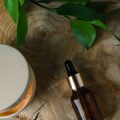1. Understanding Adult Acne in Your 20s
Dealing with acne as an adult can feel frustrating, especially when you thought breakouts were just a teenage problem. But in your twenties, adult acne is more common than you might think—especially among American young adults balancing school, work, and social life. To manage it effectively, it helps to know what’s really causing those stubborn pimples.
Common Causes of Adult Acne in Your 20s
Several factors can trigger or worsen acne during this stage of life. Here are the main culprits:
| Cause | How It Affects Your Skin | Why Its Common in Your 20s |
|---|---|---|
| Hormonal Changes | Increases oil production, leading to clogged pores and breakouts | Birth control changes, periods, and stress hormones are often fluctuating at this age |
| Stress | Triggers inflammation and increases cortisol, which boosts oil production | Balancing college, jobs, and relationships can be stressful for many young adults in America |
| Lifestyle Habits | Poor sleep, diet high in sugar or dairy, and inconsistent skincare routines can all aggravate skin issues | Busy schedules make it tough to prioritize healthy habits consistently |
| Genetics | If your parents had adult acne, you’re more likely to experience it too | This factor is out of your control but important to recognize if breakouts run in your family |
Spotting Adult Acne vs. Teenage Acne
While teen acne usually shows up on the forehead and cheeks, adult acne often pops up around the jawline, chin, and lower face. These breakouts can also be more persistent and harder to treat than the ones you may have had as a teen.
Key Takeaways About Adult Acne Causes:
- Your 20s bring new triggers for breakouts beyond just puberty.
- Daily stress and lifestyle choices play a big role for many American young adults.
- You’re not alone—it’s a super common skin concern!
If you understand what’s behind your breakouts, you’ll be better equipped to find solutions that actually work for your unique skin needs.
2. Building an Effective Skincare Routine
Why a Consistent Routine Matters
If you’re struggling with adult acne in your 20s, creating a simple and consistent skincare routine is key. Your skin is dealing with hormonal changes, stress, and maybe even new lifestyle habits like late nights or workouts at the gym. Sticking to a regular regimen helps keep breakouts under control and supports your skin’s overall health.
Choosing the Right Products
When building your routine, focus on products that target acne but are still gentle enough for adult skin. Harsh treatments can dry out or irritate your face, making things worse. Look for ingredients like:
| Ingredient | What It Does | Why It Works for Adults |
|---|---|---|
| Salicylic Acid | Unclogs pores & reduces inflammation | Mild exfoliation without over-drying |
| Benzoyl Peroxide | Kills acne-causing bacteria | Effective spot treatment for stubborn pimples |
| Niacinamide | Reduces redness & controls oil | Soothes irritation and supports skin barrier |
| Retinoids (Adapalene) | Speeds up cell turnover | Fights acne and helps fade dark spots from old breakouts |
| Ceramides & Hyaluronic Acid | Hydrate & repair skin barrier | Prevents dryness from acne treatments |
Your Simple AM & PM Skincare Routine
Morning (AM):
- Cleanser: Use a gentle, non-stripping cleanser to wash away oils.
- Treatment: Apply a serum with niacinamide or salicylic acid if needed.
- Moisturizer: Even oily skin needs hydration—choose a lightweight, oil-free formula.
- Sunscreen: Always finish with broad-spectrum SPF 30 or higher to protect against sun damage and prevent post-acne marks.
Evening (PM):
- Cleanser: Double cleanse if you wear makeup or sunscreen.
- Treatment: Use retinoid or benzoyl peroxide treatments as directed (alternate nights if needed).
- Moisturizer: Apply a nourishing moisturizer to help your skin recover overnight.
Tips for Keeping It Simple & Consistent
- Avoid switching products too often—give each product at least 4-6 weeks to work.
- If you have sensitive skin, introduce one new ingredient at a time.
- Avoid harsh scrubs or alcohol-based toners that can make irritation worse.
- If you’re unsure about which products are right for you, consult a dermatologist familiar with adult acne concerns.
This straightforward approach can help balance your skin while addressing the unique challenges of adult acne in your 20s. Remember, consistency is more important than perfection when it comes to clear, healthy skin!
![]()
3. Lifestyle Adjustments That Make a Difference
The Power of Sleep, Diet, Hydration, and Stress Management
If you’re in your 20s and dealing with adult acne, your everyday habits can have a major impact on your skin. American life is busy—between work, social commitments, and personal goals, it’s easy to overlook small changes that help your complexion. Here’s how to make smart lifestyle adjustments that fit right into your daily routine.
Sleep: Your Skin’s Nighttime Reset
Not getting enough sleep can cause breakouts and dull-looking skin. Aim for 7-9 hours each night. If you find it hard to get quality rest, try winding down with a book or calming playlist instead of scrolling your phone before bed.
Diet: Food Choices Matter
Certain foods may trigger acne for some people—think sugary snacks, greasy fast food, or lots of dairy. Focus on whole grains, lean proteins, fruits, and veggies to nourish your skin from the inside out.
| Foods to Limit | Skin-Friendly Swaps |
|---|---|
| Soda & Sugary Drinks | Water with lemon or herbal tea |
| Chips & Fast Food | Baked sweet potato fries or grilled chicken wraps |
| Desserts loaded with sugar | Fresh fruit or Greek yogurt with berries |
Hydration: Keep It Simple
Your skin needs water to stay healthy and clear. Carry a reusable water bottle so you can sip throughout the day—aim for at least eight cups daily. Try adding slices of cucumber or mint to your water if you want extra flavor.
Stress Management: Don’t Let It Show on Your Skin
High stress levels increase hormones that can worsen acne. Find quick ways to unwind that suit a busy schedule—take a short walk outside, listen to music during your commute, or use mindfulness apps like Headspace or Calm for five minutes a day.
Quick Tips for Busy Americans:
- Set reminders to drink water every hour.
- Prep healthy snacks on Sundays so they’re ready when cravings hit.
- Create a bedtime routine—even five minutes makes a difference.
- Add short movement breaks between Zoom calls or meetings.
- Try deep breathing exercises while waiting in line or sitting in traffic.
Small tweaks in your daily habits can pay off big time for your skin. With these practical tips tailored for an on-the-go American lifestyle, healthier skin is totally within reach.
4. Seeking Professional Help
When Should You See a Dermatologist?
If you’ve tried over-the-counter acne treatments and lifestyle changes but your skin isn’t getting better, it might be time to consult a dermatologist. Here are some signs you should consider seeing a professional:
- Your acne is severe or painful (cystic or nodular acne)
- You have scarring or dark spots left by pimples
- Over-the-counter products aren’t working after several weeks
- Your acne is affecting your confidence or mental health
- You notice side effects from store-bought products
What Can a Dermatologist Do for Adult Acne?
Dermatologists can offer treatments that go beyond what’s available at the drugstore. Here’s what you can expect:
| Treatment Type | Description |
|---|---|
| Prescription Creams & Gels | These may include retinoids, antibiotics, or azelaic acid, which are stronger than over-the-counter options. |
| Oral Medications | Pills like antibiotics, birth control pills (for hormonal acne), or spironolactone can help control breakouts from the inside out. |
| Office Procedures | Treatments like chemical peels, light therapy, or cortisone injections for stubborn cysts can speed up healing. |
| Personalized Skincare Plans | Your dermatologist can recommend a routine tailored to your skin type and acne severity. |
Telehealth Appointments: A Convenient Option in the US
If you’re busy or prefer not to visit an office, telehealth is a popular way to connect with dermatologists across the United States. Many clinics offer video calls where you can show your skin concerns, get prescriptions sent to your pharmacy, and receive follow-up care—all from home. This makes it easier than ever to get professional advice without taking time off work or school.
5. Debunking Common Myths About Acne
When you’re dealing with adult acne in your 20s, it’s easy to feel frustrated—especially with all the misinformation floating around. Let’s break down some of the most common myths about adult acne in American culture and set the record straight with science-backed facts.
Myth vs. Fact: What’s Really True About Adult Acne?
| Myth | Fact |
|---|---|
| You only get acne if you don’t wash your face enough. | Acne isn’t just about cleanliness. Over-washing can actually irritate your skin and make breakouts worse. Hormones, stress, and genetics are bigger factors. |
| Eating greasy foods causes acne. | While a healthy diet supports skin health, there’s no direct link between eating pizza or fries and breakouts. Dairy and high-glycemic foods may impact some people, but everyone is different. |
| Acne is just a teenage problem—you’ll outgrow it. | Many adults experience acne well into their 20s and beyond due to hormones, stress, and lifestyle factors. |
| Suntanning helps clear up pimples. | The sun might dry out pimples temporarily, but UV exposure can damage skin and trigger more breakouts later. Always wear sunscreen! |
| Popping pimples makes them heal faster. | Popping pimples can spread bacteria, cause scarring, and prolong healing. It’s best to leave them alone or use spot treatments recommended by dermatologists. |
H3: Why These Myths Stick Around
American pop culture often links acne to poor hygiene or “bad” habits, but real-life skin issues are much more complex. Social media trends and old-school advice from family or friends can make it hard to know what’s true. Remember, even celebrities deal with adult acne!
H4: Evidence-Based Tips for Healthier Skin
- Stick to gentle cleansers: Avoid harsh scrubs that can irritate your skin.
- Watch for triggers: Track any foods or habits that seem to worsen your breakouts.
- Don’t skip moisturizer: Even oily skin needs hydration—look for oil-free formulas.
- If over-the-counter products don’t help, see a dermatologist: Professional advice can make a huge difference.
Your Takeaway
Busting these myths helps you focus on what really matters for clear skin: good habits, evidence-based treatments, and patience. Don’t let outdated ideas hold you back from feeling confident in your 20s!


